The Ultimate WordPress Security Guide – Step by Step (2024)
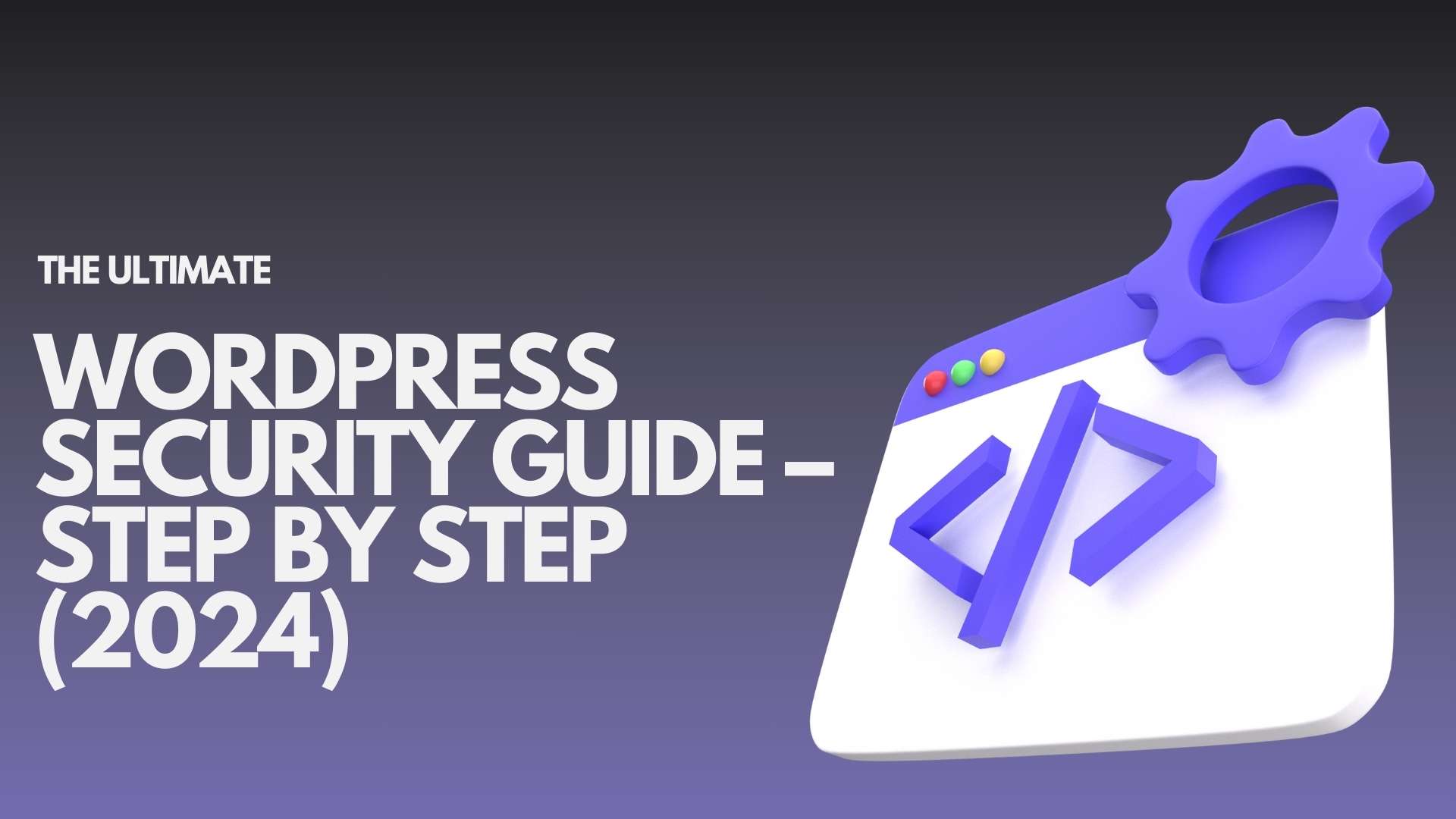
WordPress security is essential for every website owner. If you take your website seriously, you need to follow WordPress security best practices. Otherwise, you could become one of the thousands of websites that Google blacklists every day for malware and phishing.
In this guide, we will share our top WordPress security tips to help you protect your website from hackers and malware, which is crucial for B2B Marketing and maintaining a strong online presence. Alongside securing your site, understanding Inbound Marketing for B2B Business and leveraging services like SEO and Local SEO can significantly enhance your digital strategy. Regular SEO Audits are essential, as are implementing On Page SEO and Off Page SEO techniques to keep your site visible and safe.
Although WordPress devlopment is a robust and regularly audited platform, maintaining a secure website requires ongoing attention. At WPBeginner, we understand that security isn’t solely about eliminating risks but also mitigating them effectively.
Even if you’re not a tech expert, you can significantly enhance your WordPress site’s security by following these practical steps.
Table of content
- Basics of WordPress Security
- WordPress Security in Easy Steps (No Coding)
- WordPress Security for DIY Users
- Conclusion
Basics of WordPress Security
1. Why WordPress Security Is Important
A compromised WordPress website can severely harm your business’s revenue and reputation. Hackers may steal user data and passwords, install malicious software, and even distribute malware to your visitors. In the worst-case scenario, you might be forced to pay a ransom to regain control of your website.

Google daily alerts 12-14 million users about potential malware or information theft on websites they attempt to visit. Additionally, Google blacklists over 10,000 websites each day due to malware or phishing activities.
Similar to how physical business owners protect their premises, online business owners must prioritize the security of their WordPress websites.
2. Keep WordPress Updated
As an open-source platform, WordPress devlopment benefits from constant updates and maintenance. While minor updates are automatically applied, major releases require manual action. Beyond the core software, WordPress’s vast ecosystem of plugins and themes, developed by third-party contributors, also receives regular updates.
Keeping your WordPress installation, plugins, and themes up-to-date is essential for ensuring the security and reliability of your website.
Use Strong Passwords and User Permissions
The most common WordPress hacking attempts exploit stolen passwords. You can significantly reduce this risk by using complex, unique passwords for your website.
This doesn’t just apply to your WordPress admin account. Ensure that all your login credentials, including FTP accounts, databases, hosting accounts, and custom email addresses, are protected with strong passwords.
Many users find it challenging to remember complex passwords. Fortunately, you can use a password manager to securely store and manage your credentials.
To further minimize risks, avoid granting unnecessary access to your WordPress admin area. Only provide access to those who absolutely need it. If you have a large team or guest authors, carefully consider their roles and permissions before adding them to your WordPress site.
Understand the Role of WordPress Hosting
Our WordPress devlopment hosting provider serves as the foundation of your website’s security. Reliable shared hosting providers like Hostinger, Bluehost, and SiteGround employ proactive measures to safeguard their servers from common threats.
Here’s how they work behind the scenes:
- Constant Network Monitoring: They vigilantly monitor their network for suspicious activity, swiftly identifying and addressing potential security risks.
- DDoS Protection: Robust tools are in place to prevent large-scale Distributed Denial of Service (DDoS) attacks, which aim to overwhelm servers with excessive traffic.
- Up-to-Date Infrastructure: They ensure their server software, PHP versions, and hardware are always up-to-date, mitigating vulnerabilities that hackers might exploit.
- Disaster Recovery Planning: Comprehensive disaster recovery plans are in place to protect your data in the event of major incidents.
While shared hosting offers affordability and convenience, it’s essential to be aware of the potential risk of cross-site contamination. On a shared server, your website shares resources with others, increasing the possibility of a neighboring site compromising your security.
To enhance your website’s security, consider a managed WordPress hosting service. These providers offer advanced features like automatic backups, updates, and security configurations, creating a more fortified environment.
We recommend WP Engine as a leading managed WordPress hosting provider. Their reputation and popularity in the industry make them a trusted choice.
Don’t miss out on exclusive savings! Use our special WP Engine coupon to secure the best deal on their managed WordPress hosting services.
WordPress Security in a Few Easy Steps (No Coding)
We understand that enhancing WordPress security can seem daunting, especially for those without technical expertise. Rest assured, you’re not alone. We’ve assisted countless WordPress users in fortifying their sites.
With just a few simple clicks, you can significantly improve your WordPress security – no coding necessary. If you can use a mouse, you can follow these steps.
1. Install a WordPress Backup Solution
Backups are your essential safeguard against WordPress attacks. Remember, no system is completely impenetrable; even government websites face security threats.Backups enable you to quickly restore your website if compromised.
Numerous free and paid backup plugins are available for WordPress. The key is to regularly save complete site backups to an external location, not your hosting account.We suggest cloud storage like Amazon, Dropbox, or private options like Stash.
The ideal backup frequency depends on your website’s update rate. Daily or real-time backups are recommended.Plugins like Duplicator, UpdraftPlus, or BlogVault simplify this process, offering reliable and user-friendly solutions.For detailed instructions, refer to our guide on backing up your WordPress website.
2. Install a Reputable WordPress Security Plugin
Once you’ve established a reliable backup system, the next crucial step is to implement a comprehensive auditing and monitoring solution. This system should continuously track all website activity, including file integrity, failed login attempts, and malware scans.
Fortunately, you can streamline this process by installing a top-tier WordPress security plugin like Sucuri. To get started, simply install and activate the free Sucuri Security plugin. For detailed instructions, refer to our guide on installing WordPress plugins.
Afterward, navigate to the Sucuri Security Dashboard to assess if the plugin has identified any immediate security concerns within your WordPress code.

To strengthen your WordPress devlopment security, go to the Sucuri Security plugin’s settings and select the “Hardening” tab. The default settings are generally effective for most websites. To activate them, simply click the “Apply Hardening” button for each option.
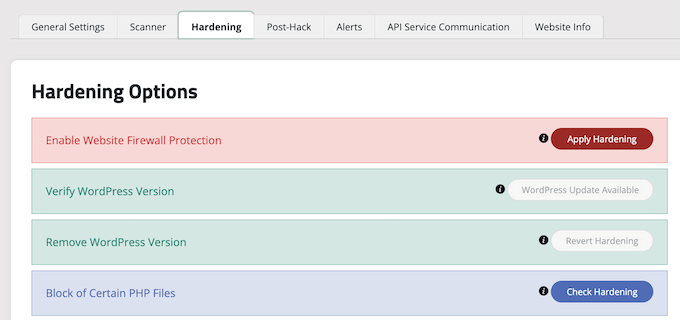
This helps you lock down the key areas hackers often use in their attacks.
Once you’ve completed the hardening process, the plugin’s default settings are typically sufficient for most websites. However, we recommend customizing email alerts to your preferences. You can find these settings in the ‘Alerts’ tab of the plugin’s settings page.
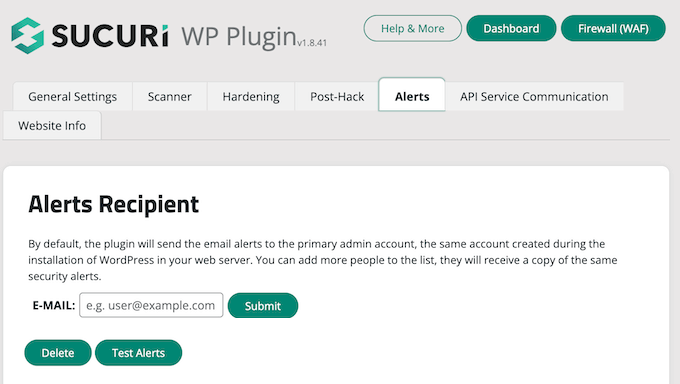
By default, you will receive a lot of email alerts that can clutter your inbox.
We recommend enabling alerts only for key actions you wish to be notified about, such as plugin changes and new user registrations.
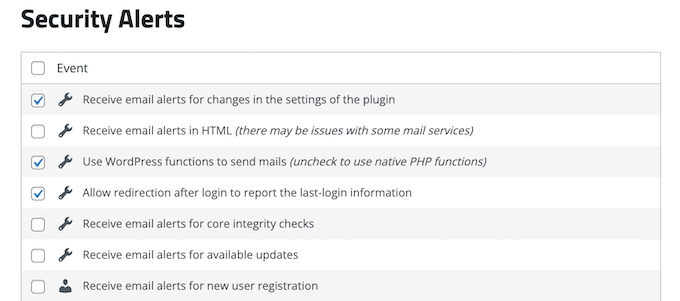
This WordPress devlopment security plugin is very powerful, so browse through all the tabs and settings to see all that it does such as malware scanning, audit logs, failed login attempt tracking, and more.
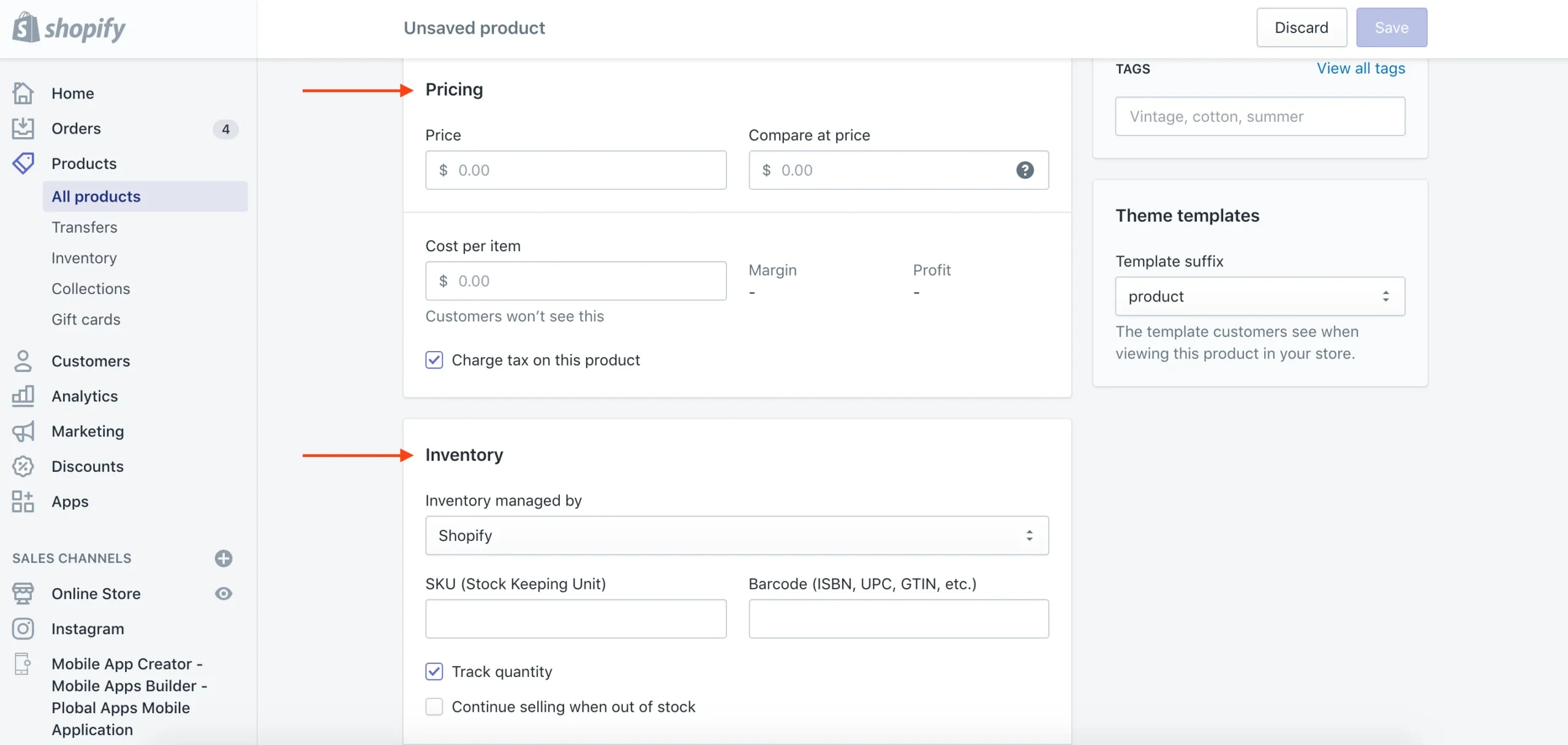
3. Enable a Web Application Firewall (WAF)
A web application firewall (WAF) is a powerful tool for safeguarding your WordPress site. By intercepting malicious traffic before it reaches your website, a WAF acts as a shield, ensuring your site’s security.
There are two primary types of WAFs: DNS-level and application-level. DNS-level WAFs filter traffic before it reaches your server, reducing server load. Application-level WAFs analyze traffic after it reaches your server but before WordPress scripts load, offering additional protection.
For many years, WPBeginner relied on Sucuri as a top-tier web application firewall for WordPress. However, our evolving needs led us to transition to Cloudflare, which offers a more extensive content delivery network (CDN) and features tailored to larger-scale operations. Sucuri, nonetheless, proved to be a formidable security solution, successfully blocking a substantial number of WordPress attacks during our tenure.
The best part about Sucuri’s firewall is that it also comes with a malware cleanup and blacklist removal guarantee. That means that if you were to be hacked under their watch, they guarantee to fix your website, no matter how many pages you have.
4. Move Your WordPress Site to SSL/HTTPS
SSL (Secure Sockets Layer) is a protocol that encrypts data transfer between your website and the user’s browser. This encryption makes it harder for someone to sniff around and steal information.
Have you ever noticed a padlock icon next to a website address? That means the site is using HTTPS, a secure connection that protects your information.
In the past, securing your website with HTTPS could be expensive, leading many to stick with the less secure option (HTTP). Luckily, things have changed!
- Introducing Let’s Encrypt: A non-profit organization called Let’s Encrypt offers free SSL certificates that enable HTTPS for your website. Supported by big names like Google and Facebook, Let’s Encrypt makes security more accessible than ever.
- Getting Started with Free SSL:Many hosting providers now offer free Let’s Encrypt certificates with your hosting plan. Simply check with your hosting company to see if they have this option available.
- No Free Option from Your Host?If your host doesn’t offer free SSL, don’t worry! Several affordable options exist. However, the rewrite avoids promoting a specific company like “Domain.com.”
- Focus on Free:
Remember, switching to HTTPS is crucial for website security. Thanks to Let’s Encrypt, there’s no reason to settle for an insecure connection. Explore your hosting options or consider other affordable SSL providers to get your website protected today!
WordPress Security for DIY Users
If you do everything that we have mentioned thus far, then you are in pretty good shape.But as always, there’s more that you can do to harden your WordPress security.Keep in mind that some of these steps may require coding knowledge.
1.Change the Default Admin Username
Previously, WordPress devlopment used the default admin username “admin,” making it a prime target for brute-force hacking attempts. Fortunately, this practice has been discontinued. While most modern WordPress installations require a custom username during setup, some 1-click installers may still set the default to “admin.” If you encounter this, switching your web hosting provider is recommended.
Although WordPress doesn’t provide a built-in option to change usernames, there are several methods you can employ. You can create a new admin account, delete the old one, or utilize the Username Changer plugin. For detailed instructions on these methods, refer to our guide on how to safely change your WordPress username.
2. Disable File Editing
WordPress comes with a built-in code editor that allows you to edit your theme and plugin files right from your WordPress admin area.
In the wrong hands, this feature can be a security risk, which is why we recommend turning it off.
To prevent unauthorized file editing, you can easily add the following code to your file or use a code snippet plugin like WPCode:
For detailed instructions, refer to our guide on disabling theme and plugin editors in the WordPress admin panel.
Another convenient option is to use the Hardening feature within the free Sucuri plugin. This feature allows you to enable file editing restrictions with a single click.
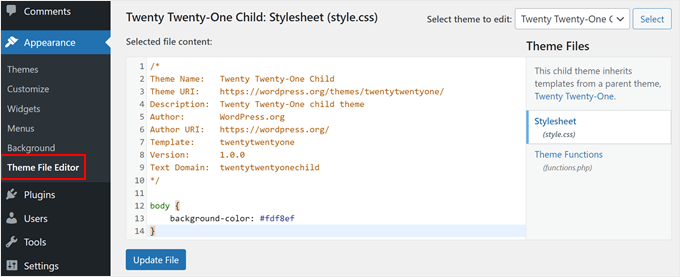
3. Disable PHP File Execution in Certain WordPress Directories
Another way to harden your WordPress devlopment security is by disabling PHP file execution in directories where it’s not needed, such as /wp-content/uploads/.
You can do this by opening a text editor like Notepad and pasting this code:
To implement these changes, save the file and upload it to the directory on your website using an FTP client. For a more detailed explanation, refer to our guide on disabling PHP execution in specific WordPress directories.
If you prefer a quicker solution, the free Sucuri plugin offers a convenient “Hardening” feature that can accomplish this task with a single click.
4. Limit Login Attempts
WordPress, by default, permits unlimited login attempts, making your website susceptible to brute-force attacks. Hackers can exploit this vulnerability by repeatedly trying different passwords.
To counter this, you can easily restrict the number of failed login attempts. If you’re using a web application firewall, this is typically handled automatically.
However, if you don’t have a firewall in place, follow these steps:
- Install the free Limit Login Attempts Reloaded plugin.
- Activate the plugin.
The plugin will automatically limit login attempts. You can customize the settings by going to Settings » Limit Login Attempts and clicking the ‘Settings’ tab. For instance, to comply with GDPR, enable the ‘GDPR compliance’ checkbox.

5. Add Two Factor Authentication (2FA)
Two-factor authentication (2FA) adds an extra layer of security to your login process by requiring two separate pieces of information:
- Username and Password: The traditional login credentials.
- Verification Code: A unique code generated by a device or app you control, like your smartphone. This code is difficult for hackers to obtain.
Many popular online services, including Google, Facebook, and Twitter, offer 2FA as a security option. You can also easily enable 2FA for your WordPress site.
To get started, install and activate the WP 2FA – Two-factor Authentication plugin. Our step-by-step guide will walk you through the installation process.
This will let you scan the QR code on your computer using your phone’s camera. You may first need to give the app permission to access the camera.After giving the account a name, you can save it.
A user-friendly wizard will guide you through the setup, and you’ll receive a QR code to scan with a 2FA app on your device.

To enable two-factor authentication, you’ll need to scan the QR code using a mobile authenticator app like Google Authenticator, Authy, or LastPass Authenticator. We suggest using Authy or LastPass Authenticator because they offer cloud backup, ensuring your account logins are easily recoverable if you lose or replace your phone.
Most authenticator apps function similarly. If you’re using Authy, simply tap the “Add account” button to begin the setup process.
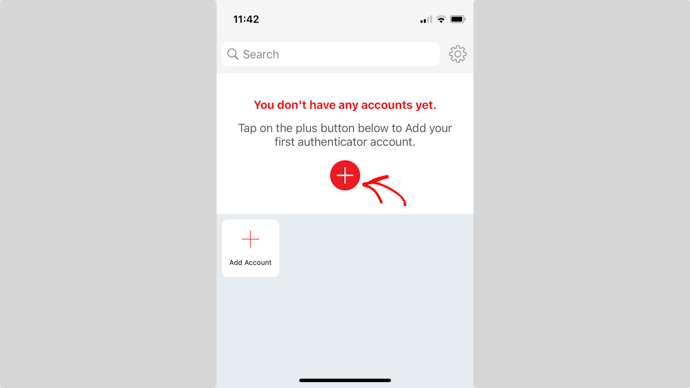
This will let you scan the QR code on your computer using your phone’s camera. You may first need to give the app permission to access the camera.After giving the account a name, you can save it.
Next time you log in to your website, you will be asked for the two-factor authentication code after you enter your password.
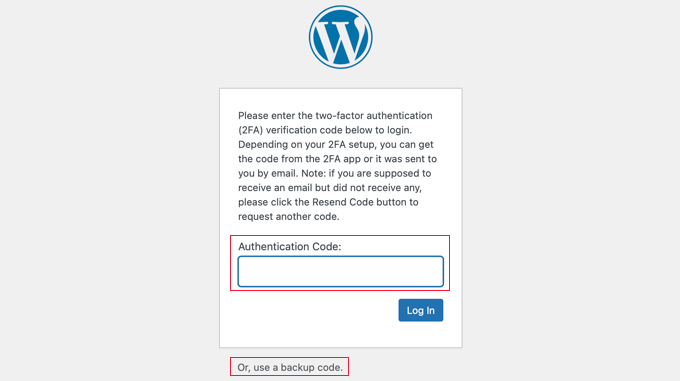
Simply open the authenticator app on your phone, and you will see a one-time code.You can then enter the code on your website to finish logging in.
6. Change the WordPress Database Prefix
WordPress devlopment security automatically sets the prefix for all database tables as “wp_.” This default prefix can make it easier for hackers to identify and target your tables. To enhance your website’s security, it’s recommended to modify this prefix. Our guide provides detailed instructions on how to change the WordPress database prefix.
7. Password Protect WordPress Admin and Login Page
Hackers often target the wp-admin directory and login page to attempt unauthorized access or launch attacks. By implementing server-side password protection, you can effectively block these attempts and enhance your WordPress site’s security. Follow our detailed guide to learn how to password-protect your wp-admin directory.
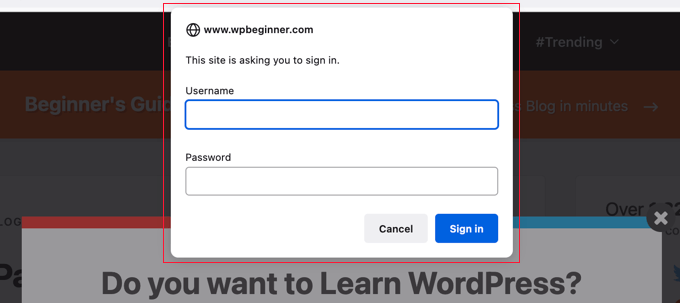
8. Disable Directory Indexing and Browsing
When you access a specific folder on your website, the web browser typically displays the file if it’s present. However, if this file doesn’t exist, the browser might show a list of all files in that folder. This is called directory browsing.
Hackers can exploit directory browsing to identify vulnerable files on your website and gain unauthorized access. Additionally, other individuals may use it to view your files, copy images, or gather information about your website’s structure. To prevent these security risks, it’s strongly recommended to disable directory indexing and browsing.
To disable directory browsing, connect to your website using FTP or your hosting provider’s file manager. Locate the file in your website’s root directory. If you can’t find it, refer to our guide on why the file might be hidden.
Once you’ve found the file, add the following line at the end:
Save the file and upload it back to your website.For more detailed instructions, please refer to our article on how to disable directory browsing inWordPress.
9. Disable XML-RPC in WordPress
XML-RPC, a built-in WordPress feature, enables communication between your website and external applications. While it offers flexibility, it can also be exploited by attackers to launch brute-force attacks more efficiently.
In a traditional brute-force attack, a hacker would attempt to guess your password through multiple login attempts. With XML-RPC, attackers can use the function to send thousands of password combinations in a single request, significantly increasing the attack’s effectiveness.
If you’re not actively using XML-RPC, it’s recommended to disable it to enhance your WordPress site’s security.
There are several methods to disable XML-RPC:
- .htaccess Method: This is the most efficient way, as it directly modifies your website’s configuration.
- Plugin Method: There are plugins available that can disable XML-RPC.
- Code Editing: You can manually edit your WordPress files to disable XML-RPC.
Note: If you’re using a web application firewall (WAF), it may automatically block XML-RPC requests, providing an additional layer of protection.
For a detailed guide on disabling XML-RPC in WordPress, refer to our step-by-step tutorial.
10. Automatically Log Out Idle Users in WordPress
When you’re logged into a website, it’s like leaving your front door unlocked. Someone could sneak in and take advantage of your open session. To prevent this, many banking and financial sites automatically log you out if you’re inactive for too long.
You can do the same thing on your WordPress site. Just install the Inactive Logout plugin. Once it’s activated, go to Settings » Inactive Logout to customize when you’ll be logged out automatically.
Simply set the time duration and add a logout message. Then, don’t forget to click on the ‘Save Changes’ button at the bottom of the page to store your settings.
For step-by-step instructions, please refer to our guide on how to automatically log out idle users in WordPress.
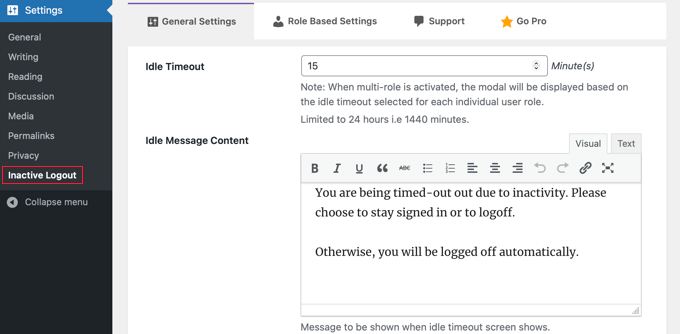
11. Add Security Questions to the WordPress Login Screen
Adding a security question to your WordPress login screen makes it even harder for someone to get unauthorized access.
You can add security questions by installing the Two Factor Authentication plugin. Upon activation, you need to visit the Multi-factor Authentication » Two Factor page to configure the plugin’s settings.
This will allow you to add various types of two-factor authentication to your site, including security questions.
12. Scan WordPress for Malware and Vulnerabilities
If you have a WordPress devlopment security plugin, it’ll regularly scan your site for malware and security threats. However, if you notice a sudden dip in traffic or search rankings, it might be a good idea to manually scan for malware.
You can do this using your existing security plugin or one of the many malware and security scanners available online. These tools are pretty easy to use. Just enter your website’s address, and they’ll crawl your site to look for malicious code.
Remember, most WordPress security scanners can only detect malware. They can’t actually fix the problem or clean up a hacked site. That’s where the next step comes in.

13. Fix a Hacked WordPress Site
Many WordPress users underestimate the importance of backups and website security until they fall victim to a hack. Hackers often leave backdoors on compromised sites, making them vulnerable to future attacks.
While there are DIY guides available for cleaning up a hacked WordPress devlopment site, this process can be complex and time-consuming. We recommend entrusting this task to a professional.
If you’re already using the Sucuri security plugin, hacked site repair might be included in your subscription. Alternatively, consider using WPBeginner Pro Services’ hacked site repair service. For a one-time fee of $249, they offer comprehensive services like premium file determination, malicious code removal, software and security updates, and a cleaned site backup.
We guarantee to fix your site or give your money back. We also cover your website for 30 days after the repair, so if you get hacked again during that time, we’ll be there to fix it.
We have been cleaning and securing WordPress websites for 10+ years, so you’ll have peace of mind when you use our Hacked Site Repair service.
Conclusion
This article has provided valuable insights into enhancing WordPress devlopment security and highlighted the best security plugins to safeguard your site. For further optimization, be sure to check out our comprehensive guide to WordPress SEO and local SEO to boost your search rankings, and explore our expert advice on accelerating WordPress performance.
Whether you’re focused on Website Redesign, Shopify Website Development, or E-commerce Digital Marketing, robust security is key to protecting your investments and enhancing user trust. By following this guide and partnering with Emerge Digital, you can ensure your WordPress site is secure and optimized for success in 2024 and beyond.
Looking for a top-notch website development company in India? Our team at Emerge consists of experienced developers offering comprehensive website development services tailored to your specific needs. From building robust architectures to delivering seamless user experiences, we’ll help you create exceptional digital platforms. As one of the best website development companies in India, we’re committed to delivering innovative solutions that drive engagement and success.
About Author
 Meet Ritu, an expert writer in web development. Her articles provide insightful guidance navigating the online retail and web technology landscapes.
Meet Ritu, an expert writer in web development. Her articles provide insightful guidance navigating the online retail and web technology landscapes.






